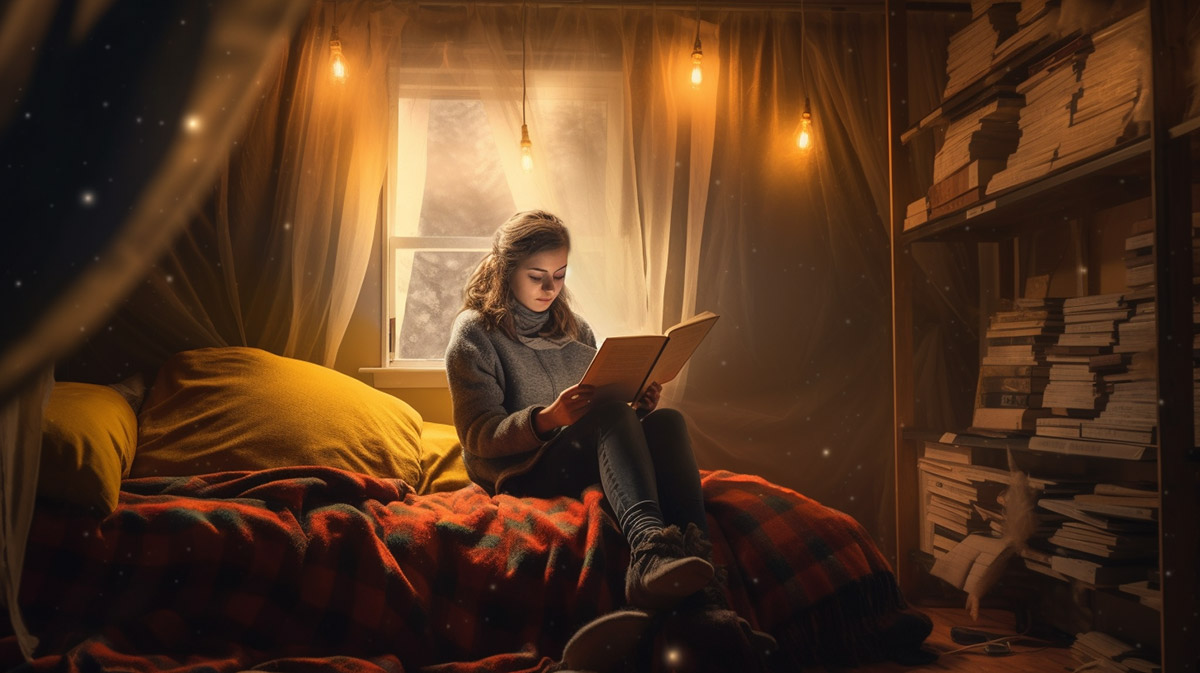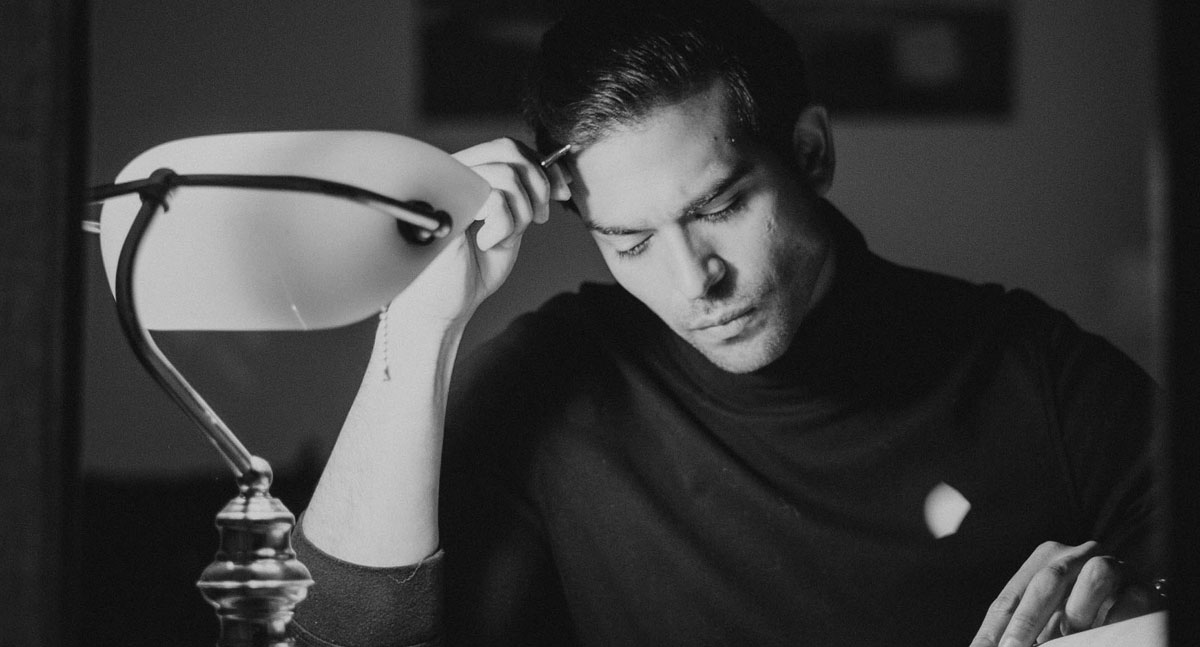When it comes to studying, what’s the best colour of light to use? Blue light is often recommended for students, as it has been found to improve focus and cognitive function. However, not all colours are created equal – different wavelengths can have different effects on your ability to concentrate and learn. In this blog post, we’ll explore what kind of student you are and what colour LED light might be best for you!
Different colours can have different effects, so it may help work out what kind of student you are. Do you prefer a calm and serene environment? Or do you like to be surrounded by stimulating visuals? Once you know what kind of learner you are, finding the best LED light for studying will be a breeze! Your chosen LED light can be installed by one of our licensed electricians so be sure to give us a buzz.
To find the best LED lights for studying, you’ll want to think about wavelengths. Visible light is within the wavelength range of 400-700 nanometers, with violets and blues at the lower end and with reds and oranges towards the top of this range.
So what does this mean for you? Well, different colours correspond to different wavelengths, and each wavelength has a different effect on your ability to focus. For example, blue light has been shown to improve alertness and cognitive function, while red light can help you wind down and relax.
If you’re looking for a light that will help you focus and stay alert, blue light is a great option. However, if you’re looking for a light that will help you relax and unwind after a long day of studying, red light might be a better choice.
Is LED light good for studying?
Yes, LED light is good for studying because compared to other light types, LED light bulbs can come in different colours, such as blue which has been shown to improve alertness and cognitive function. You can also use a dimmer switch or run the LED light at a lower voltage to help match the brightness to your personal preferences.
Is blue light good for studying?
Yes, blue light is good for studying because it has been shown to improve alertness and cognitive function.
Is yellow light good for studying?
Yellow light is not as effective for studying as blue light, but it can help improve your mood and make you feel more alert.
Is red light good for studying?
Red light is not as effective for studying as blue light, but it can help you wind down and relax after a long day of work or study. Warm colours like reds and oranges, with a higher-wavelength end of the spectrum, will naturally make your mind think of rest and bedtime, making them counterproductive for study.
Is warm light good for studying?
Warm light is not as effective for studying as blue light, but it can help improve your mood and make you feel more alert. Warm colours, with higher wavelengths, evoke a response similar to that produced by a sunset or relaxing candlelight. Warm colours, instead of aiding you in staying awake and concentrated, create a soothing atmosphere that will stimulate your body’s natural melatonin production – the sleep hormone.
Is Yellow or White light better for studying?
The choice between yellow and white light for studying largely depends on personal preference and individual needs. Both types of light have their advantages and disadvantages, which can impact concentration, productivity, and overall well-being.
Yellow Light
Yellow light, often referred to as warm light, is characterized by a colour temperature of around 2700K to 3000K. It is similar to the colour of natural sunlight at sunrise or sunset. Yellow light can create a cozy, comfortable, and relaxing atmosphere that may help reduce eye strain and stress.
Advantages:
- Comfortable for the eyes: Yellow light is gentle on the eyes, which can help alleviate eye strain and fatigue during long study sessions.
- Enhances relaxation: The warm ambience created by yellow light can make the study environment feel more inviting and calm, potentially improving concentration.
Disadvantages:
- Reduced alertness: The relaxing nature of yellow light may cause some individuals to feel less alert or focused during study sessions.
- Lower visibility: Yellow light is not as bright as white light, which may make it harder to see small text or details in certain study materials.
White light
White light, also known as cool or daylight light, typically has a colour temperature of around 5000K to 6500K. It resembles natural sunlight during midday and provides a bright, clear, and crisp environment. A study by Narendran, N., & Deng, L. (2002) on “Color rendering properties of LED light sources” shows that RGB mix white LED light sources have the best overall characteristics to be used as reading or task lights.
Advantages:
- Enhanced alertness: The cool temperature of white light can help increase attention and focus, making it easier to stay awake and attentive during long study sessions.
- Improved visibility: White light is brighter than yellow light, which can make it easier to read, write, or view intricate details in study materials.
Disadvantages:
- Increased eye strain: The bright nature of white light can cause eye strain or discomfort over time, especially during extended study periods.
- Less relaxing: The crisp, cool tone of white light may create a less comfortable or soothing environment for some individuals.

What is the best LED light colour for reading?
Amber light and red light are the finest colours for reading at night since they don’t affect your circadian rhythm or hormone balance. If you’re reading from a hard copy, amber or red LED bulbs that are designed to block blue light will be enough.
If you’re reading from an electronic light-emitting device, such as a computer, laptop, tablet, kindle, or smartphone, you’ll need to wear blue-light-blocking glasses in addition.
Individuals who read on a light-emitting device in the evening did not feel as relaxed or drowsy, took longer to fall asleep, and were less awake and attentive the next morning compared to those who read a printed book. The LED devices also emitted blue light wavelengths that disrupted melatonin hormone balance.
Conclusion
No matter what color LED light you choose, make sure to invest in a quality product that will provide you with the light you need to succeed in your studies. Take a minute to understand lumens so that you can take into consideration different brightness and other factors before choosing. Thanks for reading and we hope this blog post helped you find the best LED light for studying. Good luck and happy learning!


